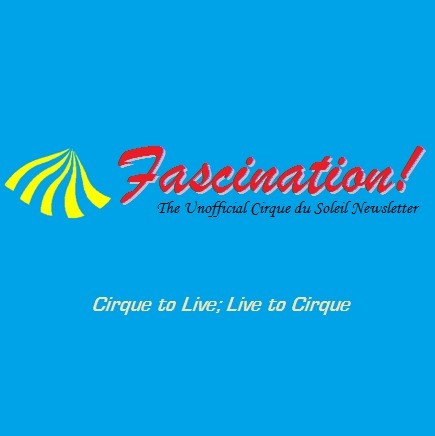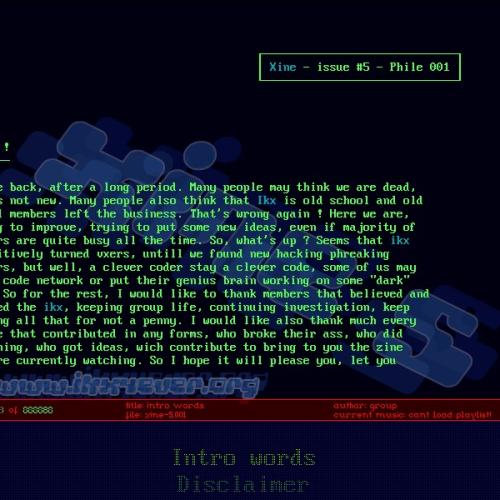Copy Link
Add to Bookmark
Report
AIList Digest Volume 5 Issue 211

AIList Digest Tuesday, 8 Sep 1987 Volume 5 : Issue 211
Today's Topics:
Queries - FLEXIGRID & Quote & Mactivation,
Neural Networks - Unaligned Fields,
AI Tools - OPS5 for PC,
Linguistics - Interrobangs,
Philosophy - Wittgenstein and World Description Nets &
Should AI be Scientific? & Leibniz on Philosophy
----------------------------------------------------------------------
Date: 3 Sep 87 18:34:38 GMT
From: imagen!atari!portal!cup.portal.com!tony_mak_makonnen@ucbvax.Berk
eley.EDU
Subject: cognitive research tool
I am going to meet Finn Tschudi in Norway sometime around Sept 17
I'll be looking at the newest version of his FLEXIGRID program ,
originally intended as computerized application of Kelly Rep Grid
on psychological constructs ; also found useful by knowledge
engineers in understanding the process of knowledge acquisition etc
Anyone with any questions you want me to put to Finn ; or interest
in purchasing the latest version etc let me know before that time
Ciao .
------------------------------
Date: 5 Sep 87 01:34:38 GMT
From: munnari!trlamct.oz!andrew@uunet.UU.NET (Andrew Jennings)
Subject: quote : attributable to ?
Recently somebody on comp.ai.digest suggested the following (or close to it) :
"Give an AI researcher the task of banging in a nail. First he'll
study hammers. Before you know it he'll be studying advanced
metallurgy"
Can anyone remember (preferably the author) : a) the exact words b) the author
Thanks : I want to quote this in a talk, and obviously for all concerned its
better if its correct.
--
UUCP: ...!{seismo, mcvax, ucb-vision, ukc}!munnari!trlamct.trl!andrew
ARPA: andrew%trlamct.trl.oz@seismo.css.gov
Andrew Jennings Telecom Australia Research Labs
(Postmaster:- This mail has been acknowledged.)
------------------------------
Date: 4 Sep 87 02:41:49 GMT
From: hao!boulder!mikek@husc6.harvard.edu (Mike Kranzdorf)
Subject: Mactivation
> I have seen inquiries around here about neural net simulators. I have
> written a program called Mactivation which simulates single and double
> layer networks which can be viewed as matrix-vector multipliers.
Would some who has recieved a copy of Mactivation please post it?
My Mac doesn't talk to the net yet (no modem cord for my new SE).
Preferably someone with 2.02 - it's a little faster but no big deal.
I suppose comp.binaries.mac and comp.doc are the right places.
You are all still welcome to write to me for it; posting will just make
it more accessible. I'll be sure to post when there's an update.
Thanks much.
--mike mikek@boulder.colorado.edu
------------------------------
Date: 4 Sep 87 16:13:31 GMT
From: boulder!mikek@boulder.colorado.edu (Mike Kranzdorf)
Reply-to: boulder!mikek@boulder.colorado.edu (Mike Kranzdorf)
Subject: Re: Neural Networks & Unaligned fields
The second reference above is correct, but fails to mention work
by Fukishima and Mozer. These multi-layer networks are able to form
an internal distributed representation of a pattern on an input retina.
They demonstrate very good shift and scale invariance. The new and
improved neocognitron (Fukishima) can even recognize multiple patterns
on the retina.
--mike mikek@boulder.colorado.edu
------------------------------
Date: 7 Sep 87 05:47:19 GMT
From: maiden@sdcsvax.ucsd.edu (VLSI Layout Project)
Reply-to: maiden@sdcsvax.ucsd.edu (VLSI Layout Project)
Subject: Re: Neural Networks & Unaligned fields
In article <12331701930.42.LAWS@KL.SRI.Com> AIList-Request@SRI.COM writes:
>The current networks will generally fail to recognize shifted patterns.
>All of the recognition networks I have seen (including the optical
>implementations) correlate the image with a set of templates and then
>use a winner-take-all subnetwork or a feedback enhancement to select
>the best-matching template.
[some lines deleted]
> -- Ken
>-------
There are a number of networks that will recognize shifts in position.
Among them are optical implementations (see SPIE by Psaltis at CalTech)
and the Neocognitron (Biol. Cybern. by Fukushima). The first neocognitron
article dates to 1978, the latest article is 1987. There have been a
number of improvements, including shifts in attention.
Edward K. Y. Jung
------------------------------------------------------------------------
1. If the answer to life, the universe and everything is "42"...
2. And if the question is "what is six times nine"...
3. Then God must have 13 fingers.
------------------------------------------------------------------------
UUCP: {seismo|decwrl}!sdcsvax!maiden ARPA: maiden@sdcsvax.ucsd.edu
------------------------------
Date: 31 Aug 87 17:25:38 GMT
From: Walter Maner<gatech!psuvax1!pitt!bgsuvax!maner@RUTGERS.EDU>
Subject: Re: OPS5 for PC - that's what I need!!! - (nf)
> Approved: ailist@stripe.sri.com
>
> I'm looking for a full-blown version of OPS5 for the IBM-PC. Working
> with the VAX-VMS version of OPS5, I'd like to experiment on my (not
> so terribly loaded) private PC.
> TOPSI - as far as I know - does not support the essential features
> which make OPS5 unique: RETE-match and therefor no recency conflict
One year ago, the full RETE algorithm existed in a beta version of
TOPSI. It may have migrated to the regular release by now.
--
CSNet : maner@research1.bgsu.edu | CS Dept 419/372-2337
UUCP : {cbatt,cbosgd}!osu-cis!bgsuvax!maner | BGSU
Generic : maner%research1.bgsu.edu@relay.cs.net | Bowling Green, OH 43403
Opinion : "If you're married, you deserve a MARRIAGE ENCOUNTER weekend!"
------------------------------
Date: 7 Sep 87 19:20:09 GMT
From: "Gregory J.E. Rawlins"
<gjerawlins%watdaisy.waterloo.edu@RELAY.CS.NET>
Reply-to: gjerawlins@watdaisy.waterloo.edu (Gregory J.E. Rawlins)
Subject: Re: Terminal Talk
In article <8708240530.AA19550@ucbvax.Berkeley.EDU>
gately%resbld@ti-csl.CSNET ("Michael T. Gately") writes:
>Another interesting notation is the order of the
>characters in a serial interrobang. I feel that there
>is a definate difference between ?! and !?. The first
>would be appropriate when describing (with disbelief)
>a question someone asked. The second is used when
>questioning a statement someone made.
In chess annotations "!?" is used to indicate an interesting but
dubious move and "?!" is used to indicate a dubious but
interesting move. Chess also uses !,?,!!, and ??.
greg.
--
GJE Rawlins gjerawlins%watdaisy@waterloo.csnet gjerawlins@watdaisy.waterloo.edu
------------------------------
Date: 2 Sep 1987 00:22 EDT (Wed)
From: Wayne McGuire <Wayne%OZ.AI.MIT.EDU@XX.LCS.MIT.EDU>
Subject: Wittgenstein & World Description Nets
> Date: 24 August 1987, 23:09:52 EDT
> From: john Sowa <SOWA@ibm.com>
> Subject: Wittgenstein and natural kinds
>
> Every schema in a cluster represents one valid use of the concept
> type. The meaning is determined not by any definition, but by the
> collection of all the permissible uses, which can grow and change with
> time.
>
> Does that solve the problem? Maybe, but we still need criteria
> for determining what kinds of uses can legitimately be added to a
> cluster. Could I say "To add something means to eat it with garlic
> and onions"? What are the criteria for accepting or rejecting a
> proposed extension to a concept's meaning?
Under the assumption that language (and all human semiotic systems),
and the concepts they label, are in great part a social contract, a
collection of arbitrary conventions momentarily accepted in a ceaseless
process of interaction by a particular group of people in a particular
space and time and culture, perhaps what is permissible is anything
that any human group, through _actual usage_, indicates they find
useful as a tool of communication.
Human societies are much like Humpty Dumpty in _Alice in Wonderland_:
"When _I_ use a word," Humpty Dumpty said in rather a scornful
tone, "it means just what I choose it to mean--neither more nor
less."
"The question is," said Alice, "whether you _can_ make words mean
so many different things."
"The question is," said Humpty Dumpty, "which is to be master--
that's all."
An ideal program with general intelligence would closely monitor
the actual language usage and semiotic behavior of its target domain,
and assimilate as new schemata in its world model those new words,
signs, and concepts which reach a user-settable level of usage or which
are assigned by social fiat roles as fixed conventions (fixed for the
time being, of course, for the life of this particular cultural phase).
One can easily imagine wanting one's world model to be more
comprehensive, however, and to include highly idiosyncratic language
uses that are not social conventions. Integrating the detailed mental
models and private languages of all the world's leading imaginative
writers, from Homer to Norman Mailer, could be valuable for the
purposes of some people and with the object of constructing a humanist
superintelligence.
A speculation: how many new schemata enter the set of all human
discourse in a year? Probably professional dictionary-makers and
terminology-compilers have given some thought to this question.
I recently came across an apt passage in Wittgenstein's _Tractatus
Logico-Philosophicus_:
I can place over the world a unified descriptive net through which
I bring everything to a unitary form. According to the kind of net
that I choose there results a kind of world description. If I take
various nets then I produce various world descriptions.
Wittgenstein then chooses mechanics as a sample world description net,
and notes: "Mechanics determines one form or description of the world
by saying that all propositions used in the description of the world
must be obtained in a given way from a given set of propositions--the
axioms of mechanics."
But there are at least as many distinct world description nets as there
are persons, living and dead, and probably many more, taking into
account the changing mental model of an individual over time, and the
sets of unique mental models of an individual in different roles and
social domains. There is much redundancy in all these models, but
there is also a subset of each net that is special and which includes
schemata that are the only ones of their kind. Clearly artificial
intelligence researchers need to pay much more attention to pragmatics
and sociolinguistics: the notion that intelligence is reducible to a
set of universal principles or context-free grammar rules is misguided.
Ultimately AI might seek to model and integrate, in a Supreme World
Net, as many Wittgensteinian world description nets as possible, to map
their literal and metaphoric relations, and to track their evolution
and devolution in real time. (And while we are at it, it would be
nice to build a working perpetual motion machine.)
Wayne McGuire
------------------------------
Date: Thu, 3 Sep 87 09:03:22 MDT
From: shebs@cs.utah.edu (Stanley Shebs)
Reply-to: cs.utah.edu!shebs@cs.utah.edu (Stanley Shebs)
Subject: Re: Should AI be scientific? If yes, how?
In article <8708281322.AA27689@duke.cs.duke.edu> duke!mps
(Michael P. Smith) writes:
>In article <8708251656.AA14266@cs.utah.edu> cs.utah.edu!shebs@cs.utah.edu
>(Stanley Shebs) writes:
>>
>>Goedel's and Turing's ghosts are looking over our shoulders. We can't do
>>conventional science because, unlike the physical universe, the computational
> ^^^^^^^^^^^^^^^^^
>>universe is wide open, and anything can compute anything. Minute examination
> ^^^^^^^^^^^^^^^^^^^^^^^^^^^^^^^^^^^^^^^^^^^^^^^^^^^^^^^^
>>of a particular program in execution tells one little more than what the
>>programmer was thinking about when writing the program.
>>
> [emphasis added]
>
>Would you please explain this tantalizing remark? Surely not every
>formal system can compute every function (what about the ghost of
>Chomsky?). Are you alluding to the mutual emulatability of Turing
>machines?
This is basic computer science. Any formalism sufficiently powerful
to compute all the computable things we know of is equivalent to a Turing
machine (Church-Turing Hypothesis), and formalisms of that power are
all incomplete (Goedel's Incompleteness Theorem). Incompleteness rears
its ugly head when we find that our most sophisticated programs cannot be
tested completely.
Simpler formal systems such as CFGs are too weak to model human intelligence,
although some aspects of human behavior have been asserted to be context-free
(for instance, Presidents that don't learn from their predecessors :-) ).
>Finally, how does the third sentence follow from the second?
This is the empirical consequence of Turing equivalence. I can write
Eurisko or XCON in Lisp, Forth, or IBM 1401 assembler, and they will all
behave the same. Assertions about the details about a program are worthless
from a theoretical point of view, details of algorithms are somewhat better,
but the algorithms appearing in AI programs are either too simple (searching
for instance) or too complicated to be analyzable (the abovementioned large
programs).
>Michael P. Smith ARPA: mps@duke.cs.duke.edu
stan shebs
shebs@cs.utah.edu
------------------------------
Date: 7 Sep 87 16:59:27 GMT
From: jbn@glacier.stanford.edu (John B. Nagle)
Subject: Leibniz on philosophy
"Philosophy is the discipline where you kick up a lot of dust and then
complain you can't see."
(as paraphrased by the physicist John Bahcall)
------------------------------
End of AIList Digest
********************




















